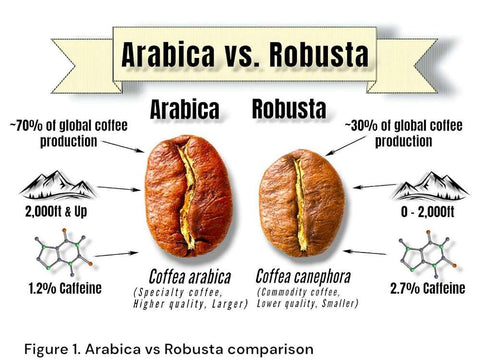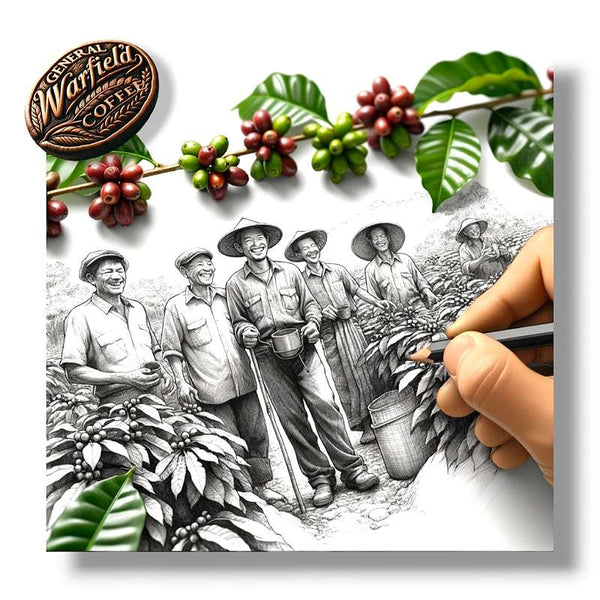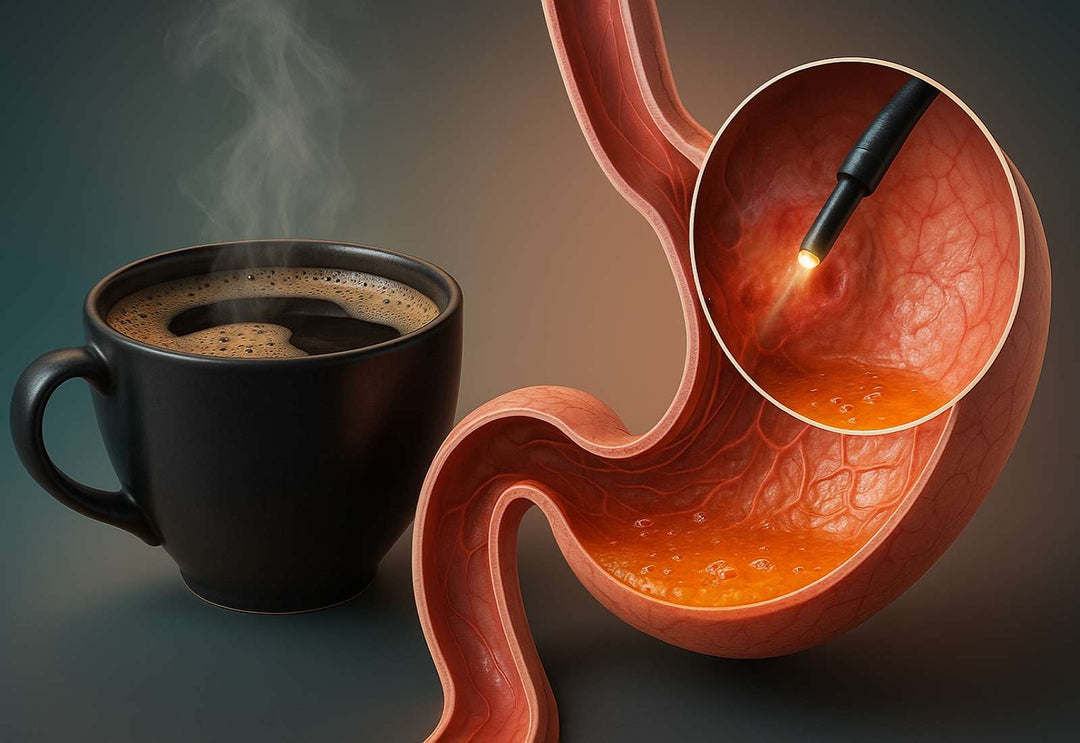Specialty Coffee Roasting: A Journey into Colombia's Finest
Colombian Coffee's Unique Flavor Profiles

Colombian coffee has long held a prestigious place in the global coffee industry, often regarded as some of the finest specialty-grade coffee available. This is not only because of the unique geographical factors that influence the beans' growth but also due to the expert processing and roasting techniques applied to extract the optimal flavors.
Specialty-grade coffee, by definition, must achieve a minimum score of 80 points on the Specialty Coffee Association (SCA) scale, and Colombian coffee consistently exceeds this standard. The combination of high-altitude farming, ideal climate conditions, and centuries of coffee-growing tradition has positioned Colombia as one of the foremost producers of premium coffee.
In this article, we will explore how Colombian medium roast specialty-grade coffee—celebrated for its vibrant acidity, deep chocolate undertones, and complex aromas—stands out in the world of coffee. This journey will take you from the high-altitude farms where Arabica beans are cultivated, through the meticulous roasting process that elevates each cup to an unparalleled experience for coffee connoisseurs.
High-Altitude Arabica Beans: The Essence of Colombian Coffee

Colombian coffee's excellence begins with its terroir. Located along the Andean mountain range, the country benefits from some of the most optimal growing conditions for coffee in the world. The altitude at which coffee is grown is a critical factor in determining the flavor profile of the final product. In Colombia, coffee is cultivated at elevations ranging from 1,200 to 2,200 meters above sea level (3,937 to 7,218 feet), which classifies it as high-altitude coffee.
Why High Altitude Matters
At these altitudes, the temperature is cooler, averaging between 19°C to 22°C (66°F to 72°F), which slows down the maturation process of the coffee cherries. This slower development allows the beans to absorb more nutrients from the soil, resulting in a denser, more flavorful coffee bean. The significant diurnal temperature variation (the difference between day and night temperatures) promotes the production of sugars and organic acids within the beans. These acids, particularly citric and malic acids, contribute to the bright acidity and fruit-forward notes that are often associated with Colombian specialty coffee.
Furthermore, high-altitude farming in Colombia is supported by the country's diverse microclimates, each offering a unique growing environment that enhances specific attributes of the coffee beans. Regions like Nariño, Huila, and Antioquia are renowned for producing beans with distinctive flavor profiles, including notes of tropical fruits, floral undertones, and rich chocolate.
Arabica vs. Robusta: The Pursuit of Superior Coffee Quality

The coffee world revolves around two primary species: Arabica (Coffea arabica) and Robusta (Coffea canephora). While Robusta has its own place in the global coffee market, particularly in the production of instant coffee and commercial-grade blends, specialty coffee is dominated by Arabica due to its superior flavor complexity, lower bitterness, and refined acidity.
The Genetic and Agricultural Differences
Arabica coffee is a more delicate species, both in terms of cultivation and flavor. It thrives at higher elevations and requires more precise care to cultivate, but the reward is a bean that offers a more nuanced and complex flavor profile. Robusta, on the other hand, is hardier and can grow at lower elevations with less susceptibility to disease. However, it often produces a more bitter, less nuanced cup due to its higher chlorogenic acid and caffeine content.
Colombian coffee predominantly consists of Arabica beans, with varieties like Typica, Bourbon, Caturra, and Castillo being the most commonly grown. These beans are specifically chosen for their adaptability to high-altitude conditions and their ability to develop a wide range of flavors, from bright citrus to deep chocolate and caramel.
To put it simply:
- Arabica: Grown at higher elevations (1,200 to 2,200 meters), with a complex flavor profile ranging from fruity to floral, lower caffeine, and a more delicate, balanced acidity. Nearly 70% of global coffee production consists of Arabica.
- Robusta: Grown at lower elevations (up to 600 meters), higher in caffeine and bitterness, more resistant to pests, and generally used in commodity-grade coffee blends. It accounts for about 30% of global coffee production.
By focusing on Arabica beans, Colombia solidifies its place among the world’s top producers of specialty-grade coffee, ensuring each cup delivers a dynamic range of flavors, balancing sweetness, acidity, and body.
See chart below for global production values of Arabica vs Robusta:

The Farming Process: Cultivating Excellence from Seed to Harvest

The journey of Colombian specialty coffee begins with careful attention to detail at every stage of the agricultural process. From seed selection to hand-picking ripe cherries, Colombian farmers take great pride in their craft, often passing down techniques through generations.
"Our coffee is not just a crop; it's our passion and heritage." - Fabian A.
Heirloom Varieties and Cultivation Techniques
Colombia's commitment to quality starts with the cultivation of heirloom Arabica varieties and disease-resistant strains like Castillo. The coffee trees are often grown in shade-covered environments, which not only protects the plants from excessive sunlight but also promotes a more sustainable ecosystem. This method fosters biodiversity and reduces the need for synthetic fertilizers and pesticides, aligning with Colombia’s growing emphasis on sustainable farming practices.
Selective Harvesting: A Manual Process
Unlike commercial-grade coffee, where cherries are often strip-harvested, Colombian specialty coffee cherries are selectively hand-picked at the peak of ripeness. This labor-intensive process ensures that only the highest-quality beans are chosen, which directly impacts the flavor, body, and aroma of the final cup. The dedication to selective harvesting, combined with careful post-harvest processing, is one of the defining features that set specialty-grade Colombian coffee apart from its commodity-grade counterparts.
Roasting: Unlocking the Full Potential of Colombian Coffee

Once the beans have been meticulously cultivated and harvested, they are transferred to expert roasters who elevate the raw potential of the green coffee beans through precision roasting techniques. The roasting process is where the true artistry of specialty coffee comes to life.
Medium Roast: The Sweet Spot for Colombian Coffee
A medium roast is often chosen for Colombian coffee because it strikes the perfect balance between acidity, body, and flavor complexity. This roast level allows the natural characteristics of the beans—such as their bright acidity, chocolatey undertones, and fruity aromatics—to shine without overpowering the delicate nuances that make Colombian coffee so desirable.
During roasting, the beans undergo several chemical transformations, including the Maillard reaction and caramelization, which develop the coffee's flavor, color, and aroma. The roasting process also triggers the release of essential aromatic oils, which contribute to the coffee's complex fragrance and flavor profile.
In particular, Colombian coffee responds well to medium roasting due to its balanced acidity and inherent sweetness. Roasting at this level highlights the unique terroir of Colombia’s growing regions, ensuring that each cup offers a dynamic and layered tasting experience.
Medium Roast Specialty-Grade Colombian Coffee Brands

When discussing specialty-grade Colombian coffee, one cannot overlook General Warfield’s Coffee. Their medium roast Colombian Arabica is sourced exclusively from small estate farms near Colombia’s renowned Coffee Triangle. This region, famous for its rich volcanic soil, provides an ideal environment for producing coffee with a distinctive balance of floral aromatics, tropical fruit notes, and a smooth chocolate finish.
The commitment to small-batch roasting ensures that each batch is carefully monitored, and the beans are roasted to perfection. The result is a coffee that consistently scores highly in cupping tests, making it a staple for those seeking a premium coffee experience.
Conclusion: Why Colombian Specialty Coffee Stands Out
Colombian coffee’s reputation for excellence is built upon centuries of tradition, scientific advancements in farming, and the unwavering dedication of the farmers and roasters who bring out the best in every bean. The combination of high-altitude farming, optimal growing conditions, and meticulous processing makes Colombian specialty-grade coffee one of the most sought-after in the world.
Whether you are a seasoned coffee enthusiast or a casual drinker, the unique flavor profile of medium roast Colombian Arabica coffee will captivate your palate, offering a harmonious blend of brightness, sweetness, and complexity. General Warfield’s medium roast Colombian coffee offers a perfect blend of tradition, quality, and flavor that’s sure to impress even the most discerning coffee lover.
Summary of Key Insights:
High-Altitude Farming Advantages
- Optimal Climate: Cool temperatures and ample rainfall nurture the growth of high-quality beans.
- Unique Geography: Colombia's Andes Mountains create the ideal environment for cultivating Arabica coffee.
Specialty-Grade Roasting Techniques
- Precision in Roasting: Expert control of temperature, time, and airflow ensures the extraction of optimal flavors.
- Medium Roast Focus: This roast level highlights the bright acidity, rich chocolate notes, and smooth body characteristic of Colombian coffee.
- Chemical Transformations: The roasting process unlocks complex chemical reactions, including caramelization and the release of aromatic oils.
Distinct Flavors of Colombian Medium Roast
- Balanced Acidity: The fresh, bright acidity enhances the overall flavor complexity.
- Chocolate and Depth: Rich chocolate notes provide a layered, indulgent taste.
- Smooth Finish: A velvety texture lingers, creating a lasting sensory experience.
Commitment to Quality
- Hand-Selected Arabica Beans: Only the finest beans from Colombia’s prestigious Coffee Axis are chosen.
- Craftsmanship: Each cup is a testament to meticulous sourcing and expert roasting, reflecting generations of passion and precision.
Try General Warfield’s medium roast Colombian coffee and embark on a sensory journey that will transport you to the heart of the Andes.






Leave a comment